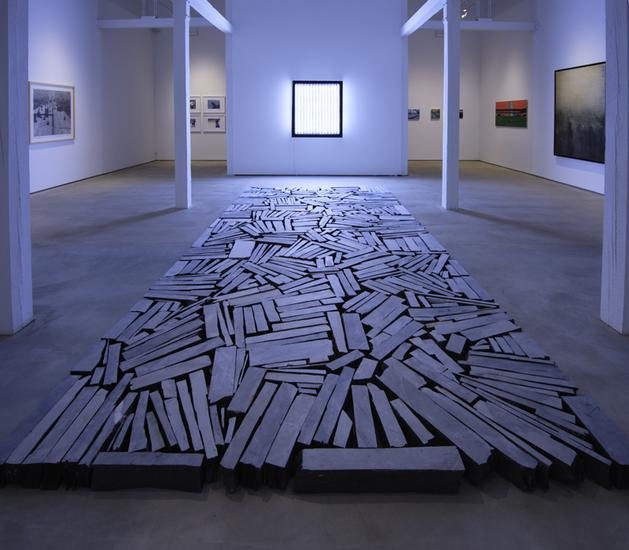Landscapes after Ruskin: Redefining the Sublime
Landscapes after Ruskin: Redefining the Sublime explores contemporary painting, photography, sculpture, and video through the lens of influential English art critic and social thinker John Ruskin (1819–1900), who argued that the artist’s principal responsibility is “truth to nature.” For Ruskin, this “truth” was more than just a technical representation of the natural world on canvas but also a depiction of it as experienced by humankind. In Landscapes after Ruskin, guest curator and artist Joel Sternfeld examines how, in a world overwhelmed by industrial development and environmental uncertainty, contemporary artists are discovering new beauties and terrors associated with nature and, in so doing, invoking an updated sense of the sublime. The exhibition features a wide range of works by over fifty artists, including Simon Aldridge, Richard Artschwager, Christiane Baumgartner, Katherine Bradford, Spencer Finch, Neil Jenney, Raymond Pettibon, Michal Rovner, Ai Weiwei, and David Wojnarowicz, among others. Organized by the Hall Art Foundation, the exhibition will be accompanied by an illustrated catalogue.
In these uncertain and volatile times, how do contemporary artists re-imagine the earth and its appearances? Landscapes after Ruskin explores this question through artworks that address an increasingly troubling notion of the sublime. Curated by artist Joel Sternfeld, the exhibition is drawn from the Hall and Hall Art Foundation collections. Some 60 works by 46 artists span many styles—from realism to expressionism, abstraction to figuration—revealing how environmental concerns are depicted now.
In the 19th century, humanity was understood to be under the dominion of nature, which had to be placated for survival. Landscape artists such as J. M. W. Turner depicted the natural world as ethereal and majestic—but also overwhelming and, at times, threatening. Turner’s great champion, John Ruskin—a Victorian art critic and social activist—argued that an artist’s principal goal should be “truth to nature.” In eliciting sensations of both beauty and terror, Ruskin asserted, Turner was able to render an authentic representation of the sublime, evoking feelings of awe and human insignificance. Later, Ruskin voiced his broader concerns about the planet, speaking out against industrial pollution and effectively becoming one of Europe’s first environmentalists.
Between the mid-20th century and today—an era that some scholars have dubbed the Anthropocene—humanity itself has come to be viewed as a significant geophysical force. Many of the works seen here confront disasters that humans have inflicted on their environment. Others propose that, in our post-industrial era, terrorism may be the sublime’s most spectacular form—a new landscape riven by destruction and filled with constant surveillance. Landscapes after Ruskin demonstrates how, in a world overwhelmed by rapid technological advances, natural disasters, and a sense of heightened anxiety, it is still possible to discover unexpected beauty and, in so doing, to redefine our sense of the sublime.
All around the Nurburgring the fast have died young - by Simon Aldridge, Grey Art Gallery New York 2018. Collection Hall Art Foundation
2 paintings by Simon Aldridge included in the Grey Art Gallery’s 2018 show - Landscapes after Ruskin: Redefining the Sublime.
Landscapes After Ruskin: Redefining the Sublime. Featuring Simon Aldridge, Joseph Beuys, Anselm Keifer, Richard Long, Gerhard Richter, Thomas Ruff, Ai Weiwei and others.
Collection - Hall Art Foundation
#LandscapesafterRuskin



